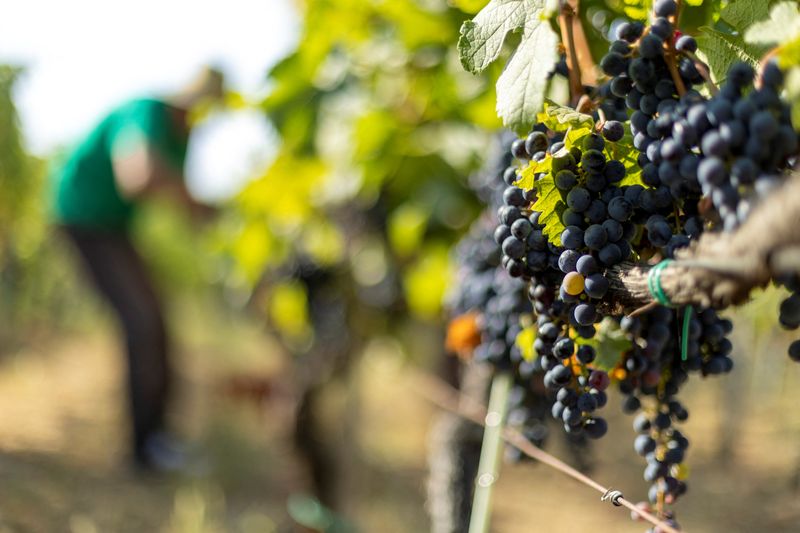By Aleksandar Vasovic and Fatos Bytyci
BACKI PETROVAC, Serbia/RAHOVEC, Kosovo (Reuters) – Rastislav Pucovski held a handful of soybeans, shriveled to the size of peppercorns, on his farmland in northern Serbia, where the soil, parched to dust by drought, swirled in the wind .
A brief rain shower, the first in more than forty days, brought no relief. The surrounding fields, near the town of Backi Petrovac, remained parched, the corn and soy crops withered.
“Everything is bone dry,” said 48-year-old Pucovski as he surveyed his country this week. “I don’t know how we’re going to sell it.”
Serbia, like much of the Balkans, experienced its hottest summer on record, fueled by repeated heat waves that pushed temperatures above 40 degrees Celsius (104 degrees Fahrenheit).
The heat, combined with drought, has put pressure on the region’s fragile electricity grid, reduced key water reserves and led to crop failures. It has also raised concerns about advancing climate change, including irregular rainfall and higher temperatures that much of southern Europe is already experiencing.
Balkan wine growers say they could be rare winners as warm weather has boosted the sugar content in their grapes. But corn, soy, sunflowers and some vegetables could be devastated, farmers say.
Agriculture accounts for about 6% of Serbia’s GDP. Preliminary data from producers suggests that Serbian corn yields could decline by around 20%.
One problem is access to water. Serbia, which has traditionally experienced high rainfall, irrigates only 1.4% of its agricultural land, according to data from the Statistical Office.
Hundreds of millions of euros would be needed to reach the global average of 17% of agricultural land under irrigation, says Belgrade-based agricultural analyst Branislav Gulan.
He expects agricultural incomes to lose about 500 million euros ($554.35 million) this year due to the drought.
In neighboring Bosnia, drought could halve corn yields to 4.5 to 5 tons per hectare, said Dragan Mandic, an expert at the Agricultural Institute of the Bosnian Serb Republic.
Dejan Jovanovic, a farmer from the Bijeljina region, said his crops were “destroyed”.
“The corn leaves are paper white and crumbly, the kernels are small.”
GRAPES AT NIGHT
The warm weather has drastically changed the grape harvest in the Balkans this year. Producers have been forced to pick grapes earlier than anyone can remember. Some harvests will be smaller, but the quality will be better, producers said.
In Croatia’s eastern Ilok region, the headlights of grape harvesters pierce the dark alleys between the vines. Winemakers have started picking at night because the grapes begin to ferment too quickly when picked in the hottest part of the day.
“It is better to harvest at night because it is not so hot,” says Darko Sili, operator.
This year’s harvest will be almost a month earlier than normal and could be up to 30% smaller due to the heat, said Vesna Stajner, spokeswoman for the Ilocki Podrumi winery.
In Kosovo, picking started in August, also a month earlier than last year. Owners said they were having trouble finding pickers this early in the season.
Dozens of workers gathered at dawn in the vineyard of the Stone Castle winery near the southern town of Rahovec.
“Our great-grandparents don’t remember grapes being harvested that early,” says Nebi Duraj, grape production coordinator at Stone Castle.
There is an advantage. “It’s like eating sugar,” said a worker in his sixties as he filled his mouth with white grapes.
Duraj said the wine quality would be better than ever this year because of its sweetness, which turns into alcohol.

“If you are looking for wine in the coming years, ask for the vintage 2024.”
($1 = 0.9020 euros)


